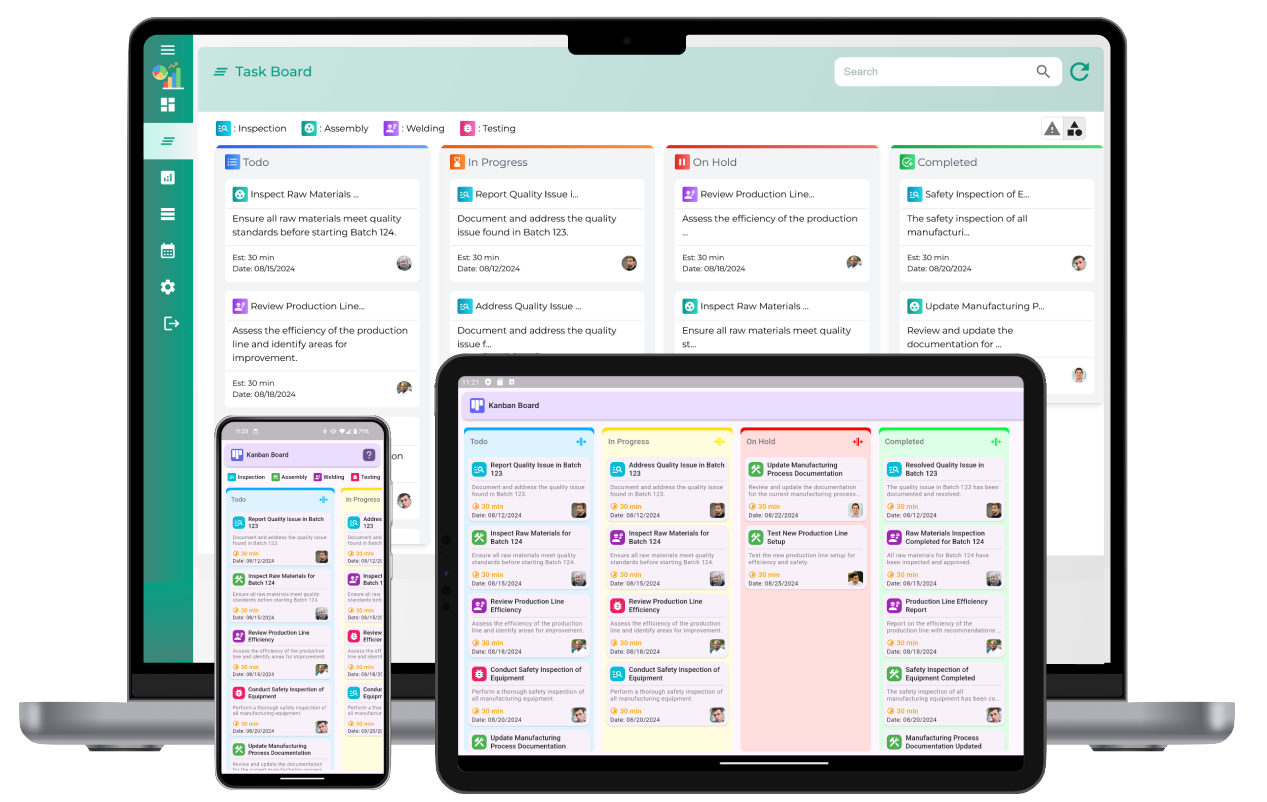In modern business environments, efficiency and flexibility are key to maintaining productivity. A digital Kanban board provides a structured yet adaptable framework for managing workflows, ensuring that teams can effectively collaborate, track progress, and optimize processes. By transitioning from physical boards to digital solutions, organizations benefit from real-time updates, enhanced visibility, and seamless remote collaboration.

Understanding the Kanban Board
The Kanban board is a visual tool that helps teams manage tasks and optimize workflow efficiency. It consists of multiple columns representing different stages of a process, allowing tasks to move from one stage to another as work progresses. Each task is represented by a card that contains relevant details such as priority, assigned team member, and deadlines.
Key Features of a Digital Kanban Board
A digital Kanban board enhances traditional Kanban principles by integrating automation, analytics, and collaboration tools. Some of the key features include:
- Real-Time Collaboration: Team members can update task statuses instantly, ensuring visibility for all stakeholders.
- Customizable Workflows: Teams can tailor columns and task categories to fit their specific processes.
- Task Prioritization: Labels, tags, and color-coding help teams identify urgent tasks and dependencies.
- Automated Notifications: Alerts and reminders help prevent delays and keep team members informed.
- Performance Metrics: Data analytics and reporting features allow managers to track productivity and identify bottlenecks.
Benefits of Using a Digital Kanban Board
Implementing a digital Kanban board offers several advantages for teams and organizations:
1. Enhanced Workflow Efficiency
By visualizing tasks and their progress, teams can easily identify and resolve inefficiencies. A clear overview of ongoing, pending, and completed tasks helps in resource allocation and prioritization.
2. Improved Collaboration
Teams, whether remote or co-located, can collaborate effectively through shared digital boards. Real-time updates ensure that everyone stays informed about task progress, dependencies, and upcoming deadlines.
3. Increased Accountability
With task assignments clearly visible, team members are aware of their responsibilities and deadlines. Managers can track individual contributions and address performance gaps proactively.
4. Seamless Integration
Digital Kanban boards integrate with other enterprise tools, enabling teams to synchronize data across project management, communication, and documentation platforms.
5. Scalability and Flexibility
Unlike physical boards, digital Kanban systems can accommodate unlimited tasks, teams, and workflow variations. Organizations can scale their processes without constraints.
Implementing a Digital Kanban Board
Organizations looking to adopt a digital Kanban board should consider the following steps:
1. Define Workflow Stages
Identify key process stages and create corresponding columns on the board. Common stages include:
- To-Do
- In Progress
- Review
- Completed
2. Add and Categorize Tasks
Break down work into manageable tasks and assign relevant details such as deadlines, owners, and priority levels. Categorization helps streamline tracking.
3. Monitor and Optimize
Regularly review the board to identify delays and inefficiencies. Use performance metrics to refine processes and improve task completion rates.
Digital Kanban Board: A Smart Solution for Agile Workflows
What is a digital Kanban board?
A digital Kanban board is an online tool that helps teams visualize workflow, manage tasks, and track progress using a structured layout of columns and cards that represent different stages of a process.
How does a digital Kanban board improve workflow management?
It improves workflow management by providing real-time visibility into task progress, reducing bottlenecks, and ensuring that work is evenly distributed across the team.
What are the key features of a digital Kanban board?
Key features include customizable columns, drag-and-drop task management, real-time collaboration, progress tracking, deadline alerts, and reporting tools.
How does a digital Kanban board support agile methodologies?
It supports agile methodologies by allowing iterative task management, enabling flexibility in workflows, and helping teams quickly adapt to changing priorities.
What are the benefits of using a digital Kanban board over a physical board?
A digital Kanban board allows remote access, automatic updates, seamless integrations, real-time collaboration, and better data analytics compared to a physical board.
How do you set up a digital Kanban board?
To set up a digital Kanban board, define workflow stages, create task cards, assign responsibilities, set deadlines, and enable notifications for real-time updates.
What are the different stages in a Kanban board?
Common stages include "To Do," "In Progress," "Review," and "Completed," but they can be customized based on the specific workflow needs of a team.
How does a digital Kanban board help with task prioritization?
It helps by enabling visual task organization, using color codes, setting priority levels, and allowing teams to focus on high-impact tasks first.
Can a digital Kanban board be used for remote team collaboration?
Yes, a digital Kanban board enables remote teams to collaborate in real-time, update tasks instantly, and stay aligned regardless of location.
How do you track progress on a digital Kanban board?
Progress is tracked by moving tasks through different workflow stages, using progress indicators, and generating reports for performance analysis.
What types of businesses benefit most from a digital Kanban board?
Businesses in project management, IT, software development, manufacturing, and customer support benefit from streamlined workflows and improved efficiency.
How does a digital Kanban board integrate with workflow automation?
It integrates with automation tools to trigger actions, send notifications, assign tasks, and streamline repetitive processes.
What are common challenges when using a digital Kanban board?
Challenges include lack of user adoption, improper task categorization, overcomplicated workflows, and difficulty in managing large projects.
How can you customize a digital Kanban board to fit specific workflows?
Customization options include adding custom columns, using color coding, setting task dependencies, and integrating with other business tools.
How do you measure efficiency using a digital Kanban board?
Efficiency is measured using key performance indicators (KPIs) such as cycle time, lead time, task completion rate, and workflow bottlenecks.